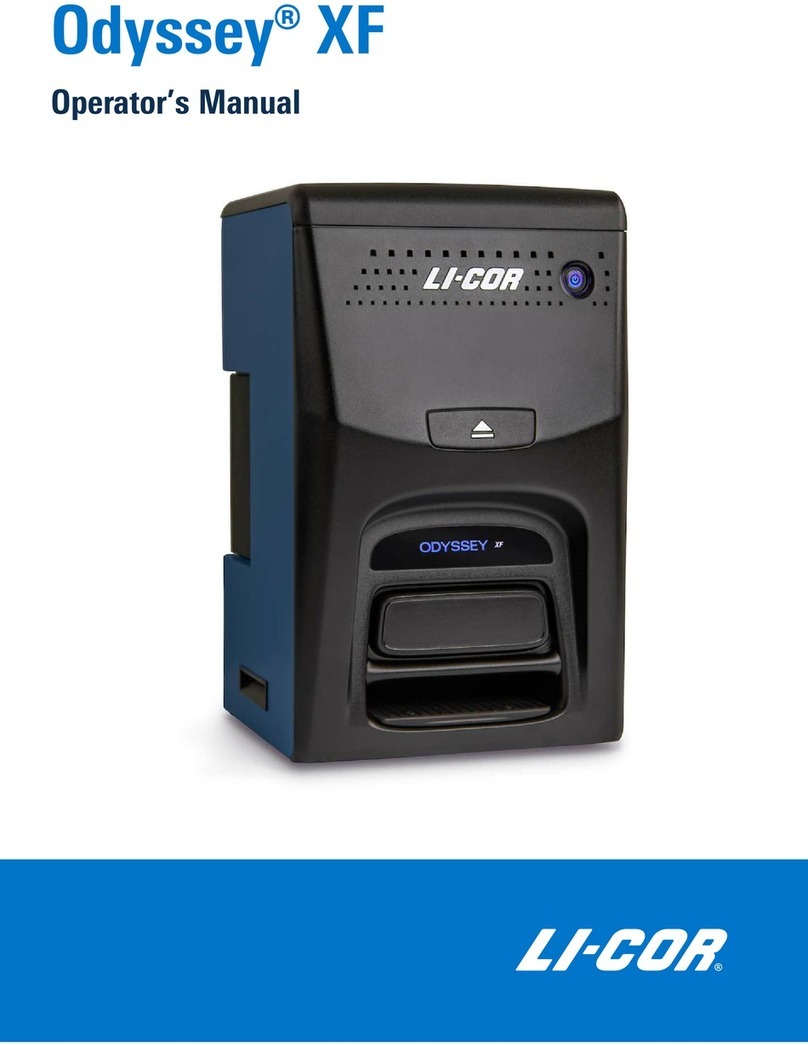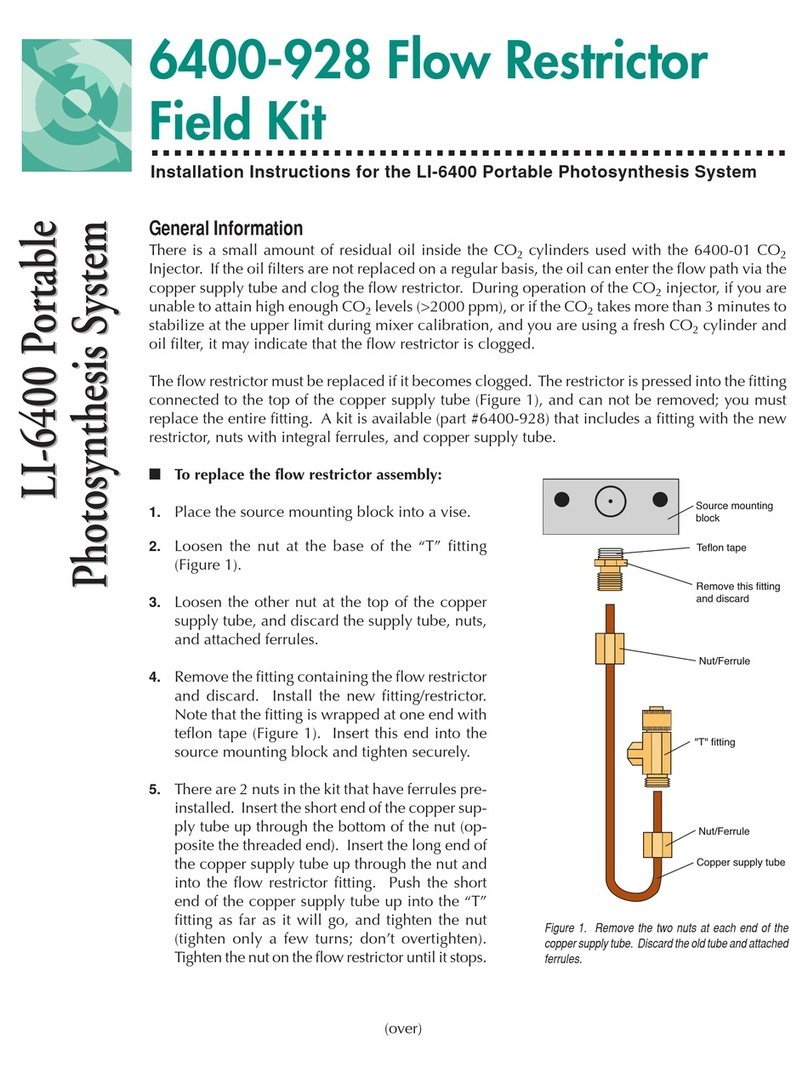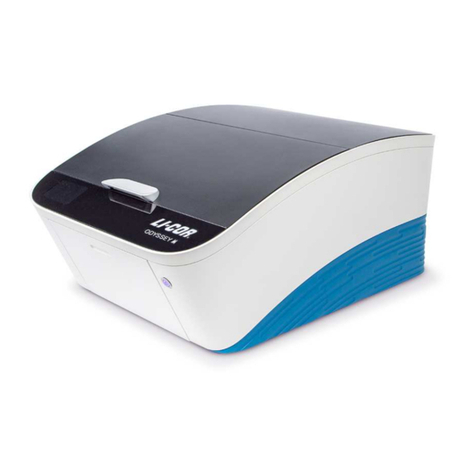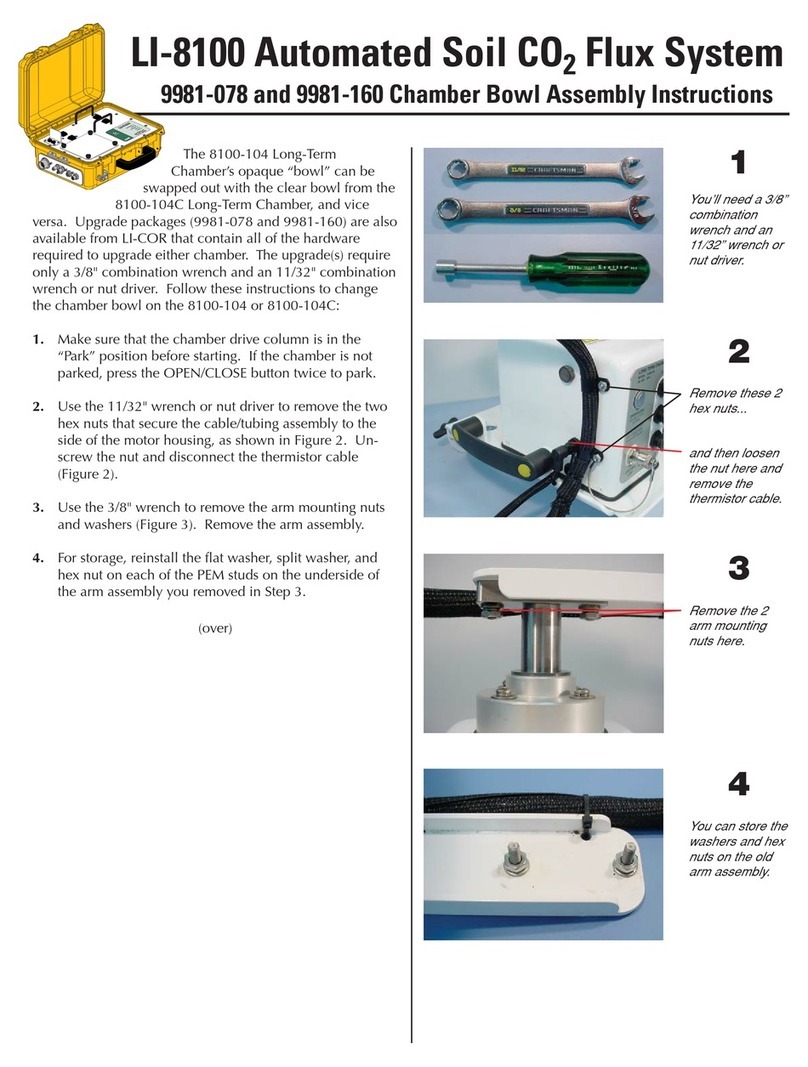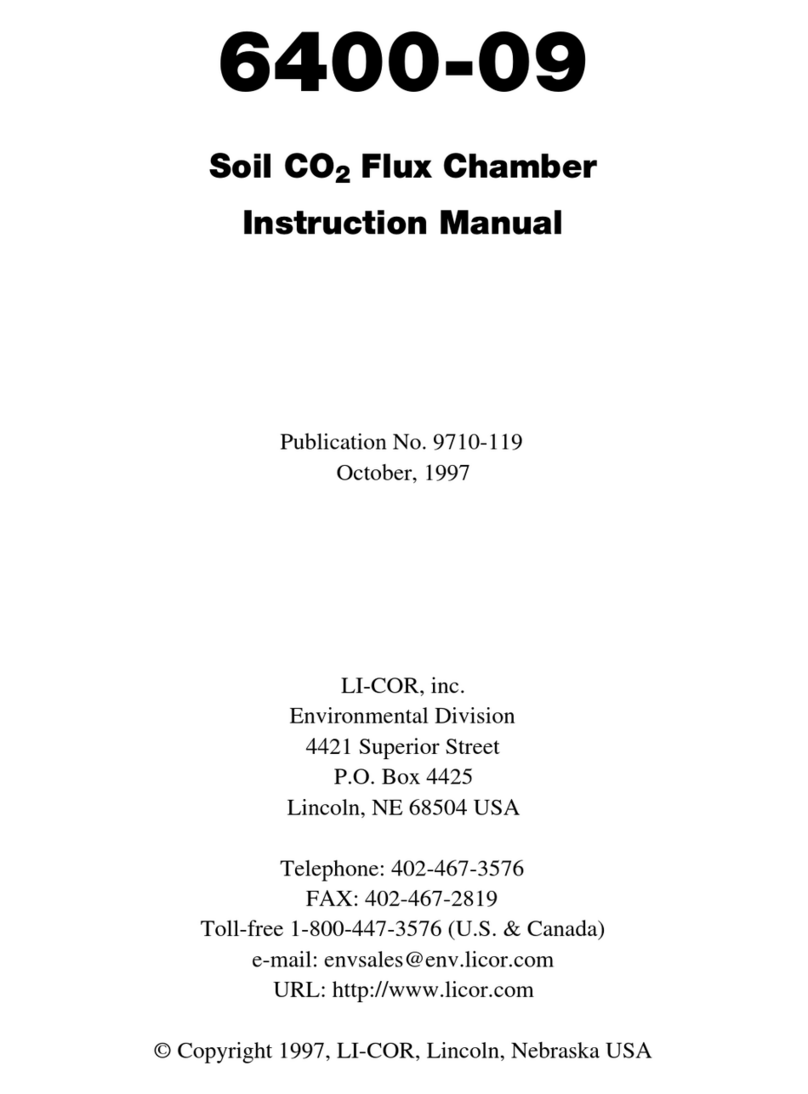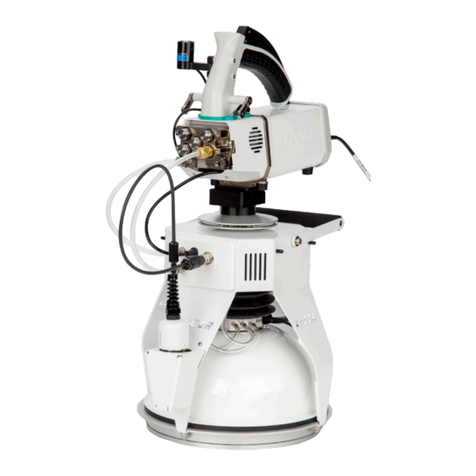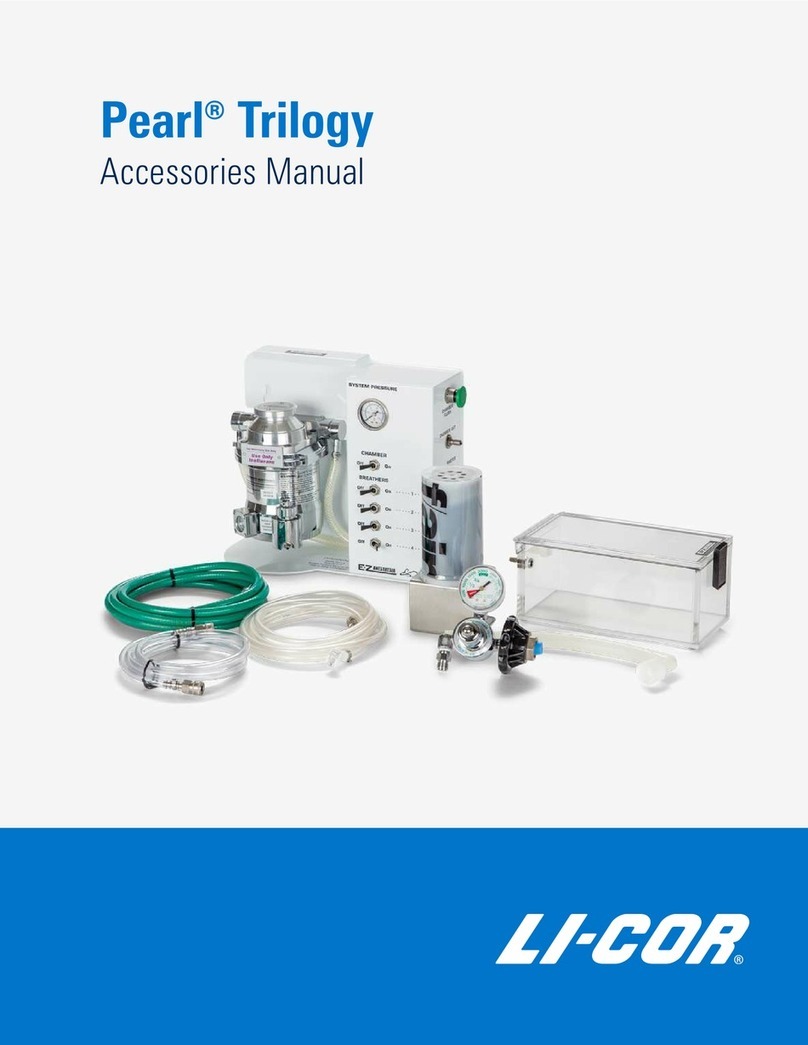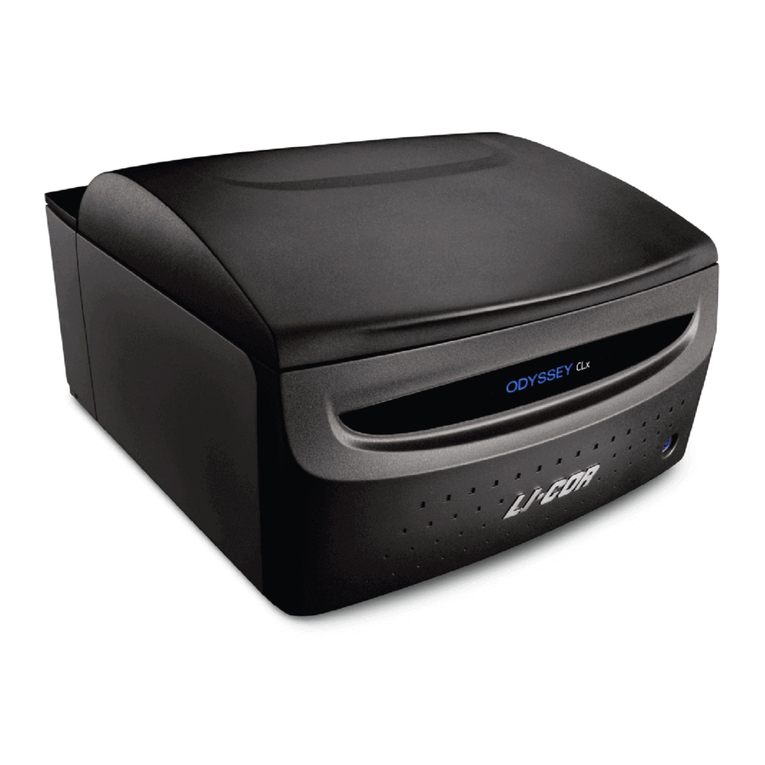
NOTICE
The information contained in this document is subject to change without notice.
LI-COR MAKES NO WARRANTY OF ANY KIND WITH REGARD TO THIS MATERIAL, INCLUDING,
BUT NOT LIMITED TO THE IMPLIED WARRANTIES OF MERCHANTABILITY AND FITNESS FOR A
PARTICULAR PURPOSE. LI-COR shall not be liable for errors contained herein or for incidental or consequen-
tial damages in connection with the furnishing, performance, or use of this material.
This document contains proprietary information which is protected by copyright. All rights are reserved. No part
of this document may be photocopied, reproduced, or translated to another language without prior written consent
of LI-COR, Inc.
© Copyright 1998,1999, LI-COR, Inc.
Publication Number 9806-122
Printing History:
1st Printing July, 1998 - OPEN Software version 3.2
2nd Printing May, 1999 - OPEN Software version 3.3
Macintosh
¨
is a registered trademark of Apple Computer, Inc.
Printing History
New editions of this manual will incorporate all material since the previous editions. Update packages may be used
between editions which contain replacement and additional pages to be merged into the manual by the user.
The manual printing date indicates its current edition. The printing date changes when a new edition is printed.
(Minor corrections and updates which are incorporated at reprint do not cause the date to change).
U.S. Patent Numbers: 5,332,901 & 5,340,987. Other patents pending in the U.S. and other countries.
LI-COR, Inc. ¥ 4421 Superior Street ¥ Lincoln, Nebraska 68504
Phone: 402-467-3576 ¥ FAX: 402-467-2819
Toll-free: 1-800-447-3576 (U.S. & Canada)

